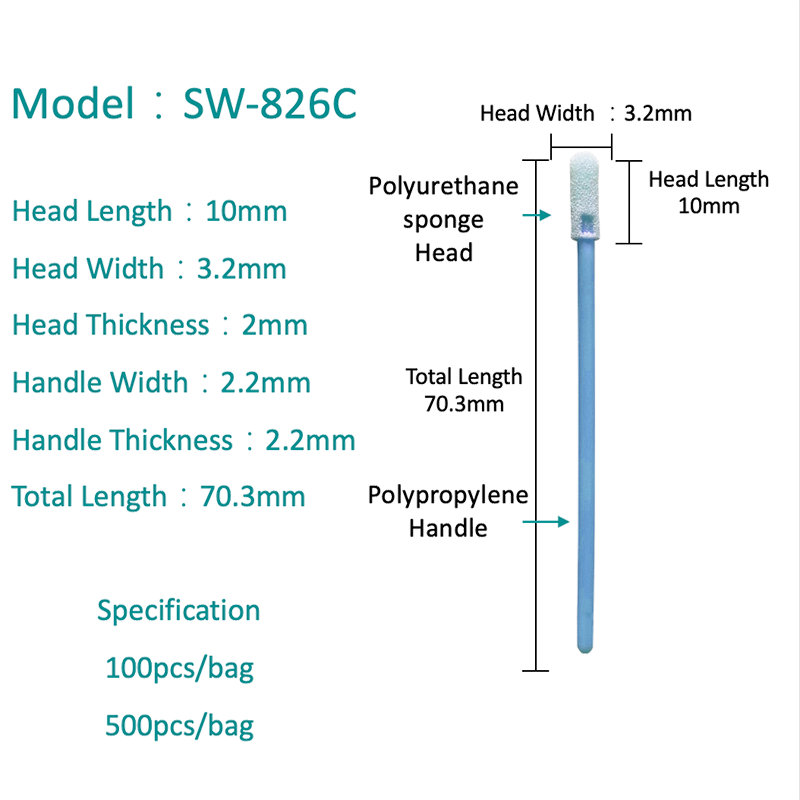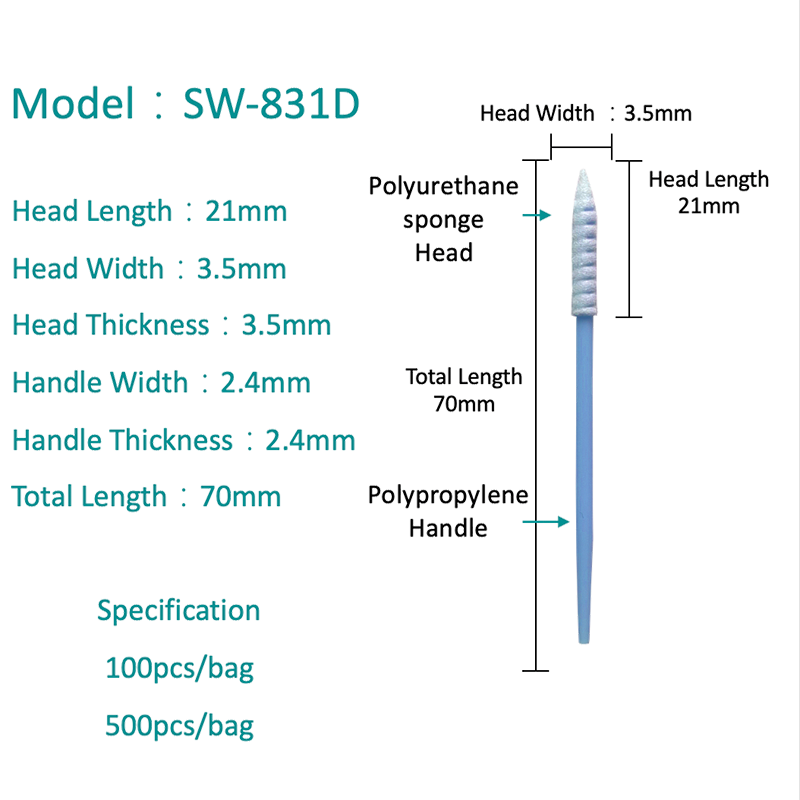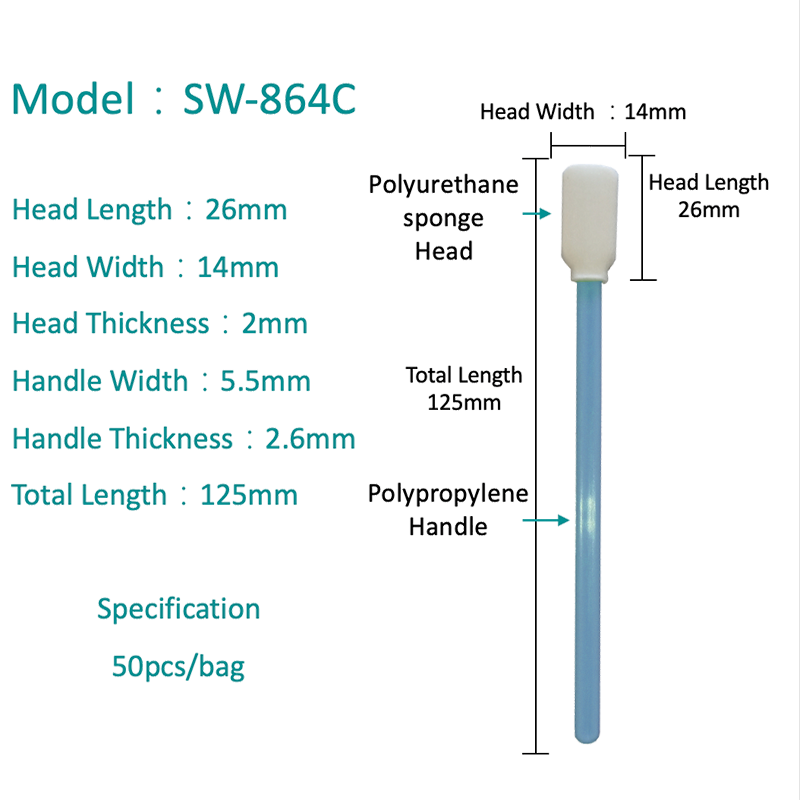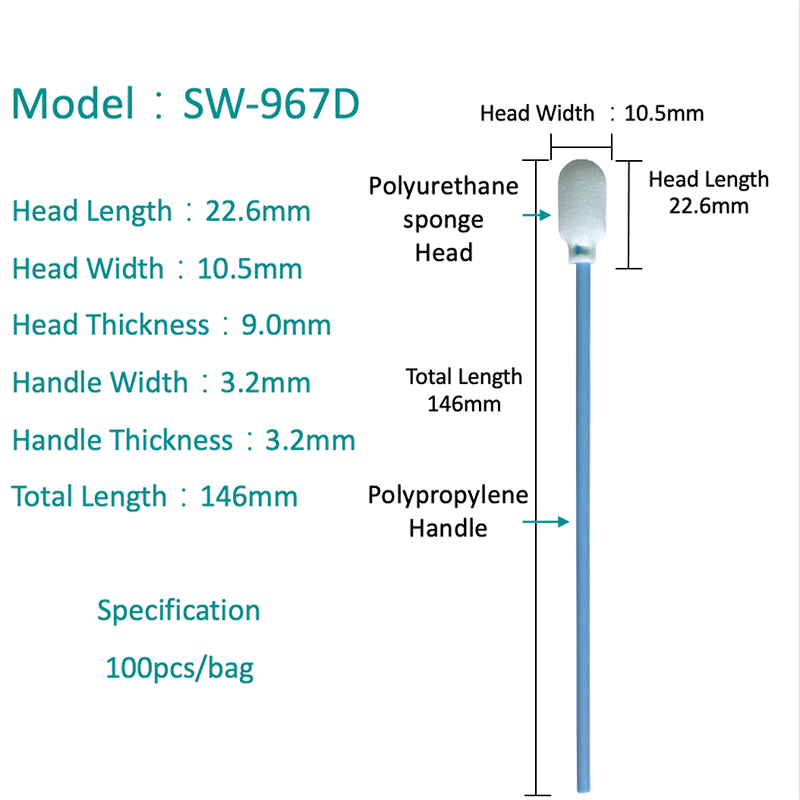HOME / NEWS / Industry News / Stubborn Spots on Your APS-C Sensor? Expert-Chosen Swabs & Cleaning Techniques
Discovering dust or stubborn spots on your APS-C camera sensor can be a frustrating experience, often revealing themselves as faint shadows in your skies or out-of-focus backgrounds. For photographers, a clean sensor is non-negotiable for achieving pristine image quality. While automated cleaning systems help, they are often powerless against adhered particles or oily spots. This is where manual cleaning, specifically using APS-C camera sensor cleaning swabs, becomes an essential skill. This guide, curated for enthusiasts and professionals alike, delves deep into the expert-recommended tools and precise techniques for safely and effectively restoring your sensor to spotless condition. We'll explore how to tackle even the most tenacious grime, ensuring your camera continues to capture flawless images.
Understanding Your APS-C Sensor and Why It Attracts Dust
The imaging sensor is the heart of your digital camera, and its cleanliness directly impacts your photos. APS-C sensors, while smaller than full-frame counterparts, are equally susceptible to contamination. Every lens change, however careful, exposes the mirrorless chamber or the space behind the DSLR mirror to dust, pollen, and moisture. These particles are electrostatically attracted to the sensor's surface. Over time, they accumulate and can become baked on from the sensor's slight heat during operation, transforming from loose dust into stubborn spots on APS-C sensor. Understanding this is the first step toward effective cleaning. The key is to act methodically, using the right tools to avoid damaging the sensor's ultra-delicate anti-aliasing filter coating, which sits atop the actual photodiodes.
- The Role of Static Electricity: The sensor surface can hold a slight charge, acting like a magnet for airborne particles.
- Environmental Factors: Humidity can cause dust to cling more persistently, while dry environments generate more static.
- Impact of Lens Changes: Zoom lenses can act like pistons, sucking dust into the camera body during operation.
Essential Tools: Choosing the Right APS-C Sensor Cleaning Swab
Not all cleaning tools are created equal, and selecting the correct one is paramount for a risk-free clean. The cornerstone of a manual cleaning kit is the swab itself. APS-C sensor swabs size guide is a critical search query for a reason—using the wrong size can lead to ineffective cleaning or potential damage. APS-C sensors require a specific swab width, typically around 16mm, to cover the sensor's width in a single pass without letting the swab's edges contact the surrounding chamber walls. Expert-preferred swabs are made from high-grade, non-abrasive, non-linting materials like microfiber or pec-pad fabric, precisely folded and attached to a medical-grade plastic handle. They are designed to be used once with a dedicated cleaning fluid to dissolve grime without leaving residues.
- Material Matters: Opt for swabs made from ultra-fine, solvent-resistant microfiber to prevent scratching and linting.
- One-Time Use: Swabs are single-use items. Reusing a swab can re-deposit grease and dirt onto the sensor.
- The Importance of Fluid: Use a specialized, residue-free sensor cleaning fluid. A drop or two is sufficient to help dissolve oily spots without oversaturating the swab.
Comparison of Common Sensor Cleaning Tools
While swabs are the expert's choice for direct, targeted cleaning, other tools exist for maintenance. The following table compares their primary uses and effectiveness to help you build a complete cleaning kit. It's important to understand that for stubborn spots on APS-C sensor, wet cleaning with a swab is often the only effective solution.
| Tool | Primary Use | Effectiveness on Stubborn Spots |
| Rocket Blower | Removing loose, dry dust | Ineffective |
| Sensor Brush | Lifting dust with static charge | Minimal |
| Sticky Gel Stick | Picking up lint and hairs | Ineffective |
| Wet Cleaning Swabs | Dissolving and wiping away adhered grime and oil | Highly Effective |
Step-by-Step: The Expert Technique for Using Sensor Swabs
Knowing how to use the tool is just as important as having the right one. The process requires a steady hand, a clean environment, and confidence. First, ensure your camera battery is fully charged to prevent the shutter from closing during the clean. Set your camera to sensor cleaning mode to lock the mirror up and shutter open. Hold the camera with the opening facing slightly downward; this allows gravity to help dislodge any particles. Apply the recommended amount of fluid to the swab's edge—never directly onto the sensor. In one smooth, confident motion, gently wipe the swab across the sensor from one side to the other. Flip the swab over and make a second pass in the opposite direction without reapplying fluid. This how to clean APS-C sensor with swab technique minimizes fluid residue and ensures complete coverage.
- Preparation is Key: Work in a dust-free room with minimal airflow. Use a rocket blower first to remove any loose debris.
- The Motion: Use light pressure—let the swab's weight do the work. Do not scrub back and forth.
- Inspect Afterwards: Use a sensor loupe or a stopped-down test shot (f/16 of a white wall) to check your work. Repeat only if necessary with a fresh swab.
Common Mistakes to Avoid During the Cleaning Process
Even with the right intentions, simple errors can lead to a less-than-ideal outcome. A frequent mistake is using too much cleaning fluid, which can leave streaks on the sensor that are then difficult to remove. Another error is using a swab that is too large or too small for the sensor format, risking contact with the sensor chamber or incomplete cleaning. Perhaps the most critical mistake is using compressed air, which can contain propellants that permanently damage the sensor's filter. Finally, a lack of patience is a error; rushing the process or trying to reuse tools to save money often results in a dirtier sensor than when you started. Adhering to the best practices for APS-C sensor maintenance means avoiding these shortcuts.
- Over-wetting the Swab: Causes streaking and can push liquid into delicate areas.
- Using Non-Specialized Tools: Cotton swabs or household cleaners are abrasive and leave residues.
- Breathing or Bumping: Be conscious of your breathing over the open camera and secure the body to prevent bumps.
Prevention: The Best Strategy for APS-C Sensor Maintenance
The most effective cleaning is the one you don't have to perform. Proactive maintenance significantly reduces the frequency of wet cleanings. The core principle of prevention is minimizing exposure. This means changing lenses quickly, with the camera body turned off and pointed downward to reduce the influx of air and particles. Choose your environment wisely; avoid lens changes in windy, sandy, or humid conditions. Regularly using a rocket blower for a dry clean APS-C sensor approach can dislodge recent dust before it has a chance to become stuck. Furthermore, storing your camera in a sealed bag with a desiccant can control humidity. Investing in high-quality lenses with good dust and weather sealing also reduces the amount of debris entering the body in the first place.
- Lens Change Discipline: Have the new lens unlocked and ready before removing the current one.
- Regular Blowing: Incorporate a quick blow with a rocket blower into your regular camera care routine.
- Proper Storage: Use a clean, dry case instead of leaving gear out in the open.
Building a Long-Term Sensor Care Routine
A consistent routine is the hallmark of a professional photographer's workflow. This doesn't mean cleaning the sensor daily, but rather establishing a system of checks and light maintenance. Start by performing a visual sensor check before any important shoot. This can be done by taking a test shot at a small aperture (e.g., f/16) of a plain, bright surface. If only a few small specks are visible, they can often be cloned out in post-processing, saving you a cleaning cycle. If more significant dust or spots are present, begin with the least invasive method: the rocket blower. Reserve wet cleaning with APS-C camera sensor cleaning swabs for when blowing is no longer effective. This tiered approach minimizes physical contact with the sensor, preserving its coating over the long term.
- Tier 1: The Blower: For loose dust after every few lens changes or before a critical job.
- Tier 2: The Brush: For slightly more persistent dust that the blower cannot displace.
- Tier 3: The Swab: For confirmed, adhered spots that affect image quality across multiple shots.

FAQ
How often should I clean my APS-C camera sensor?
There is no fixed schedule for sensor cleaning, as it entirely depends on usage and environment. The best practice is to check your sensor regularly—before a major shoot or after a period of frequent lens changes or shooting in dusty conditions. Perform a visual test by taking a photo of a white wall or sky at f/16 or higher and inspecting it for dark spots. Clean it only when you see spots that are visible in your images and are problematic for your editing workflow. For some photographers, this might be monthly; for others, it could be only once or twice a year. Proactive maintenance with a rocket blower can extend the time between necessary wet cleanings.
Can I use isopropyl alcohol to clean my camera sensor?
It is strongly discouraged to use standard isopropyl alcohol (IPA) from a drugstore for sensor cleaning. While it is a solvent, consumer-grade IPA often contains impurities and a high water content that can leave streaks or even damage the delicate anti-aliasing and infrared filters on the sensor's surface. Specialist sensor cleaning fluids are engineered to be ultra-pure, fast-evaporating, and residue-free. They are specifically formulated to dissolve organic compounds (like oil from shutter mechanisms) without harming the sensor's coatings. The small cost of proper fluid is insignificant compared to the potential expense of repairing a damaged sensor.
What's the difference between cleaning an APS-C sensor and a full-frame sensor?
The primary difference is the size of the cleaning tools required. A full-frame sensor is larger, typically 24x36mm, and requires a wider swab (usually 24mm) to cover its surface effectively. An APS-C sensor is smaller, around 23.6x15.7mm, and requires a narrower swab (typically 16mm). The cleaning technique itself remains identical. Using an APS-C swab on a full-frame sensor would require more passes and increase the risk of streaks, while using a full-frame swab on an APS-C sensor is dangerous as it is too wide and the swab's edges would drag against the sensor chamber walls, potentially contaminating the swab or damaging the chamber.
I cleaned my sensor, but there are still streaks. What should I do?
Streaks are usually caused by too much cleaning fluid, a dirty swab, or not allowing the fluid to work for a second before wiping. If you notice streaks after cleaning, do not immediately make another pass with the same or a new swab, as you might smear the residue further. The best course of action is to wait. Allow the camera to sit for 10-15 minutes with the battery in so any residual fluid can completely evaporate. After waiting, perform another inspection. If the streaks persist, repeat the cleaning process with a brand-new, dry swab (no additional fluid) to see if it picks up the residue. If problems continue, it may be best to stop and consider seeking professional service.
Is it safe to clean a camera sensor myself, or should I always use a professional service?
For most photographers, cleaning an APS-C sensor yourself is safe and cost-effective if you follow expert guidelines, use the correct tools (like dedicated APS-C camera sensor cleaning swabs), and proceed with care and patience. The process is designed for end-users. However, if you are uncomfortable after researching the process, if you have attempted cleaning multiple times without success, or if you suspect a different type of problem (e.g., a scratched filter or shutter debris), then seeking a professional cleaning service from an authorized repair center is a wise decision. They have specialized tools and experience handling more complex issues.




 English
English  中文简体
中文简体 








